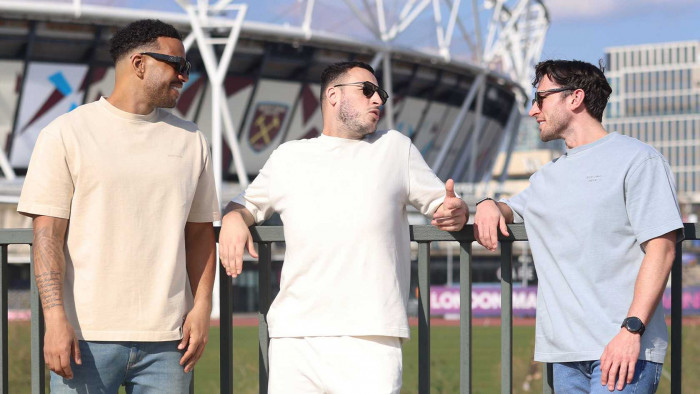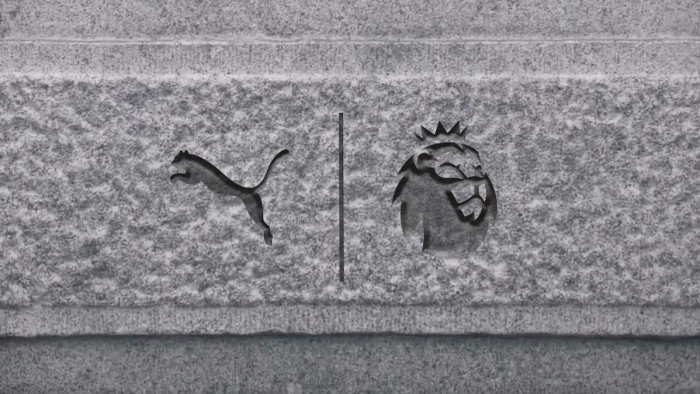"Their feet were burning, literally burning": The reality of being a male ballet dancer in 2018
Matthew has just kicked Marc in the face, and all of a sudden ballet seems brutal.


Matthew has just kicked Marc in the face, and all of a sudden ballet seems biblically brutal.
Dancing in an airy Kingston studio, accompanied only by the music of the whirring fan overhead, Matthew Sandiford and Marc Galvez are two of the ten BalletBoyz, an all-male troupe of dancers founded in 2002. They are rehearsing their latest show, Fourteen Days – which will be performed at Latitude Festival this July – when Matthew’s foot meets Marc’s nose.

Marc Galvez during a BalletBoyz rehearsal
“He previously had to miss a week because his eye swelled up and closed,” says Michael Nunn, an ex-Royal Ballet dancer who co-founded the dancing group, cupping his hand to demonstrate the size of the swelling. He is explaining why Marc seems so concerned about the kick – the dancer is cradling his nose with his hand, and through his fingers it is apparent it is turning a bright, alarming red – but no explanation is needed. Who wouldn’t be concerned about a kick in the face?
“Our dancers are like athletes,” William (Billy) Trevitt, Michael’s co-founder, had explained to me half an hour earlier in the pair’s office. “It’s very intense”. When the group first performed at Latitude in 2013, the dancers’ feet were “burning, literally burning.” They had been dancing outdoors, with the sun overhead, and the black lino floor of the stage started to heat up. “Their feet were literally blistering,” Billy explains. Dancing, it seems, is hazardous.
This brutality doesn’t fit with preconceptions about ballet, namely, as Michael puts it, that it’s for “little girls”. For the last sixteen years, the BalletBoyz have been actively challenging these stereotypes, but there is still some way to go.
“The stereotypes still exist: if you’re a male dancer you’re gay”
“In the wider population the stereotypes still exist: if you’re a male dancer you’re gay, and somehow effeminate, all of that stuff,” Billy says. Michael theorises this might have something to do with tights (which the BalletBoyz don’t actually wear).
“It could be as simple as that: ballet dancers wear tights, women wear tights, therefore they must be like women, therefore they’re feminine,” he says. A BalletBoyz official t-shirt, designed by musician and visual artist Keaton Henson, declares in large white font: “REAL MEN WEAR TIGHTS”.

William Trevitt and Michael Nunn
When people aren’t assuming the shirt refers to Batman and/or Superman (as Michael notes is unfortunately common), Billy says it helps to smash stereotypes.
“I think people wear it with pride. It’s not something you casually wear, if you’re gonna have that slogan you’ve got to be able to explain yourself, and why you’re wearing it, where you bought it, what it represents.”
It’s clear the BalletBoyz are challenging the toxic masculinity that condemns men for both expressing their emotions and for dancing (let alone expressing emotion through dance). But the real question is: should they have to?
“What I hope is that actually people just stop caring,” Billy sighs.
“We had a dancer who left us recently, but when he auditioned for us was in the final stage of applying to be in the Royal Marines. That’s always a great story because people rarely expect that,” he says.
In mock shocked voices, Billy and Michael imitate, in unison, the reaction this story gets:
“You were a REAL MAN and you wanted to be a dancer?!”

The BalletBoyz rehearse in their Kingston studio
It does seem bizarre that people still see ballet as feminine as – unlike the BalletBoyz – not many grown men can lift other grown men above their heads. Yet though ballet is undoubtedly difficult and dangerous, these facts aren’t the best way to challenge notions of toxic masculinity, more often than not eschewing progressive male views for a layer of unnecessary machismo. Injuries, strength and athleticism are par for the course, but not the whole picture. Instead – Billy argues – we should come to see the sensitivity, emotion, and art within ballet as masculine.
“Our personal issue is that dance is always put together with PE as though it’s another kind of physical activity rather than an art form,” he says. “I don’t think it’s a sport.”
Michael concurs, saying “it’s not about big bulky men throwing people around,” but is instead about “sensitivity” and “balance” and “trust in each other.”
To spread this message, Michael and Billy frequently visit schools (often with the ‘Boyz’) and run outreach workshops. Billy is slightly frustrated when I ask about bullying (“everything you ever read about male ballet dancers is about whether they’ve been called names”) but the fact remains, it’s still a problem. A 2014 study from Wayne State University found 93 per cent of boys ballet dancers experienced teasing, while 68 per cent suffered “verbal or physical harassment.” In 2003, an 11-year-old boy had his feet run over by bullies on bikes who objected to his dancing.
“It’s hard enough to get a new hair cut or a pair of shoes, let alone be the kid that does ballet”
The BalletBoyz believe that exposing children to ballet helps, as they immediately have their misconceptions smashed. Though Michael admits his 7-year-old son “gets a bit of stick at school because his dad was a ballet dancer”, although thankfully this hasn’t put him off and he himself now attends dance classes.
“We have classes here for all ages, and what tends to happen is they stop dancing around 13 or 14 and they might take it up again at 17. There’s a kind of gap where anything that singles you out from the crowd, kids just knock on the head, they don’t want to do that,” Billy says.
“It’s hard enough to get a new hair cut or a pair of shoes, let alone be the kid does ballet,” Michael adds.
For Michael and Billy, who have both been in the industry for decades, it can be hard to see why negative stereotypes persist. “I’m not ever clear what people really were expecting, unless it was men dressing up as women,” Billy says, and Michael theorises these deep-rooted stereotypes come from childhood – little girls being given “a pink tutu, a wand, and a tiara” as four year olds.
In the studio, there are no tutus – simply an array of sweatpants and Nike shorts, a Bob Marley T-shirt, and plenty of knee and ankle braces. Michael closes the large black blinds to the May sun, so a spotlight is accidentally created by the topmost, circular window near the roof. When the rehearsal ends, Matthew offers Marc a hug as an apology.
“I don’t really know what you can do to persuade people [to see male ballet differently],” Billy says, going on to joke we should “just wait for evolution to happen”. The BalletBoyz hope that when strangers stumble across them at Latitude, they will finally have their misconceptions shattered.
Real men wear tights, but they also don’t. During their first Latitude performance, with the dancers’ feet blistering in the sun, Michael and Billy hunted backstage and presented the boys with a practical solution: socks.
(Pics: BalletBoyz, Latitude)
Latest
Related Reviews and Shortlists









